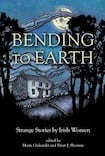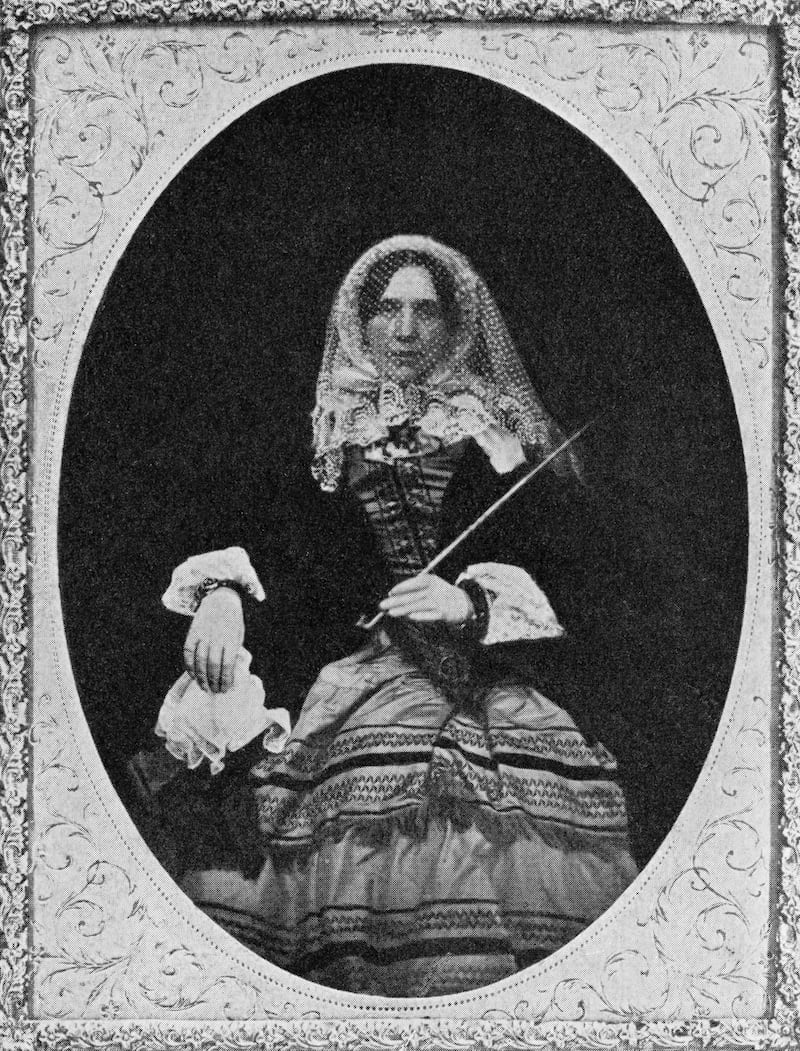
We are living in scary times, and so perhaps it’s not surprising that the past few years have been fruitful ones for the horror genre. A decade or so ago, designated horror sections were disappearing from mainstream bookshops, and beyond the ubiquitous Stephen King you had to look quite hard to find new, scary books.
It was often down to small, independent, specialist presses to keep the candle of horror fiction flickering: Tartarus, way up in the remote North Yorkshire dales; Ash Tree, even more far-flung in the village of Ashcroft, British Columbia; and Valancourt in Richmond, Virginia. In Dublin, the extraordinary Swan River Press, run by the indefatigable Brian J Showers, has published new writers and revived forgotten ones, often with a distinctively Irish focus.
For people like me, it’s a treasure.
Bending to Earth is Swan River’s latest offering, a collection of “Strange Stories” by women writers, with a particular 19th-century focus. Strange stories is a term which the editors Maria Giakaniki and Showers have borrowed, surely consciously, from the great short story writer Robert Aickman, whose work defied any straightforward generic category.

This is certainly the case here: while the bulk of the tales in Bending to Earth are classic Victorian ghost stories, there are also works of folklore and ethnography by two grandes dames of Irish literary culture, Lady Jane Wilde and Lady Augusta Gregory, and one startling work of colonial horror, Beatrice Grimshaw’s The Blanket Fiend, which is, as Giakaniki and Showers note, much closer in spirit to H Rider Haggard than to MR James.
But it’s the ghost stories you’ll want the book for. The Victorian ghost story was a genre with a particular appeal to women writers, for perhaps obvious reasons, as it’s the great genre of domestic entrapment. Like Victorian wives, Victorian ghosts were doomed never to leave the house. Bending to Earth is full of tales of women walled up in rooms, of vengeful or unforgetting dead wives, of mistreated lovers, of cruel and murderous husbands.
Supernatural
Pride of place in the volume goes to The De Grabrooke Monument, a previously uncollected story by Charlotte Riddell, in which a young woman spends the night locked in a north of England cathedral. Riddell, born and raised in Carrickfergus, was a major Victorian writer of supernatural fiction, long a staple of anthologies of ghost stories, who is now beginning to get the sustained critical and publishing attention she deserves.
Last year, the British Library republished two of her novels, Fairy Water (1873) and The Uninhabited House (1875), under the title Haunted Houses for their superb ongoing Tales of the Weird series, with an introduction by the outstanding Gothic scholar Andrew Smith. Sourcing and publishing The De Grabrooke Monument is a significant coup for Giakaniki and Showers.
Many of the other stories here were also completely new to me. Dora Sigerson Shorter is well known as a poet and sculptor, and Bending to Earth includes the remarkable Trasmigration, a work of decadent horror with a heightened narrative style in the manner of Poe, in which the soul of an evil man enters the body of his virtuous neighbour, while he himself lies catatonic. It’s a really interesting addition to Victorian doppelgänger fiction, and I wish I’d read it years ago.
Even better is the anthology’s closer, Clotilde Graves’s A Vanished Hand, in which an artist mourns the death of his wife for 15 years, only to begin to have second thoughts when she returns to him from the dead. What superficially sounds like a familiar horror trope, from The Monkey’s Paw to Pet Sematary – be careful what you wish for! – becomes, in Graves’s hands, a very clever, rather bitter, and terribly sad meditation on ageing, illusion, desire, and ambition, as a successful middle-aged man begins to realise what it would really be like to be young again.
This being a volume full of Irish ghost stories, it also has its share of Ascendancy nightmares. In BM Croker’s tale of precognitive dreams, The Red Woollen Necktie, Colonel Marden and his family move into a remote house in the west of Ireland, where they are menaced by a tramp who claims to have served with the colonel in India. In Rosa Mulholland’s highly folkloric Not to be Taken at Bed Time, set in a distinctly magical Connemara, the reclusive Coll Dhu falls in love with Evleen, the daughter of the Anglo-Irish Colonel Blake, whose father cheated Coll Dhu’s father out of land. It’s not giving the game away too much to say it does not end well.










